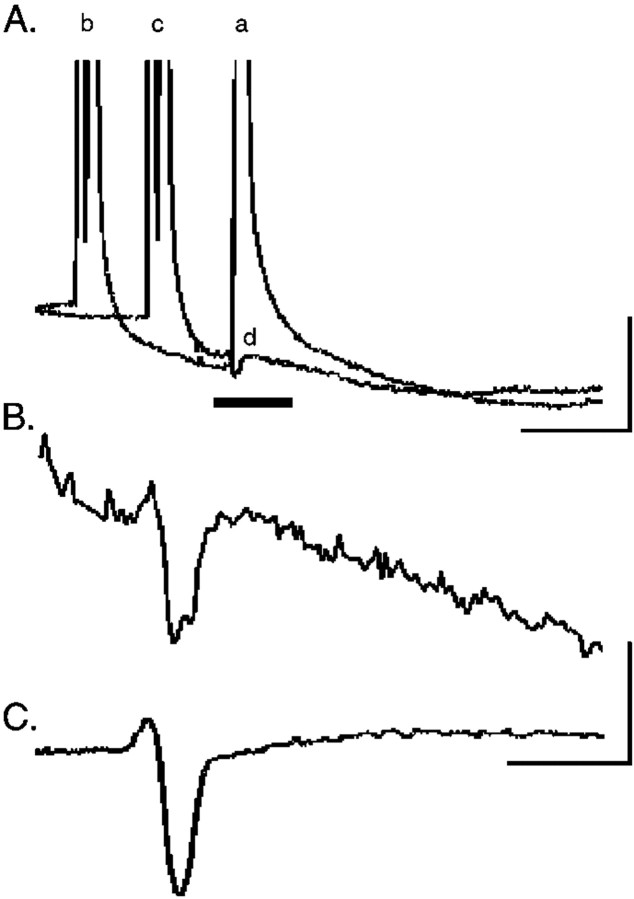Fig. 2.
Electrical coupling among axotomized motor neurons is undetectable. Motor neurons were identified by intracellular impalement in cat spinal cord by the presence of an antidromic action potential (A, a) after muscle nerve stimulation. A, Intracellular current injection was used to elicit an orthodromic action potential (b) in the impaled motor neuron. By decreasing the interval between antidromic and orthodromic stimulation (c), the antidromic action potential elicited by ventral root stimulation failed (d). This failure occurs by collision of the antidromic spike by the intracellularly evoked action potential, which transiently inactivates voltage-gated sodium channels. Calibration: 10 mV, 5 msec. B, The region indicated by theblack line in the intracellular recording inA is shown at higher gain during collision. A depolarizing potential occurring within 5–10 msec of the antidromic stimulus artifact would be a putative coupling potential, but such potentials were not consistently observed. C, Extracellularly recorded field potential after antidromic ventral root stimulation (average of 5 sweeps) was subtracted from the intracellular trace during collision (B) to determine whether any remaining depolarizing potential was present. Calibration:B, C, 2 mV, 2 msec.

